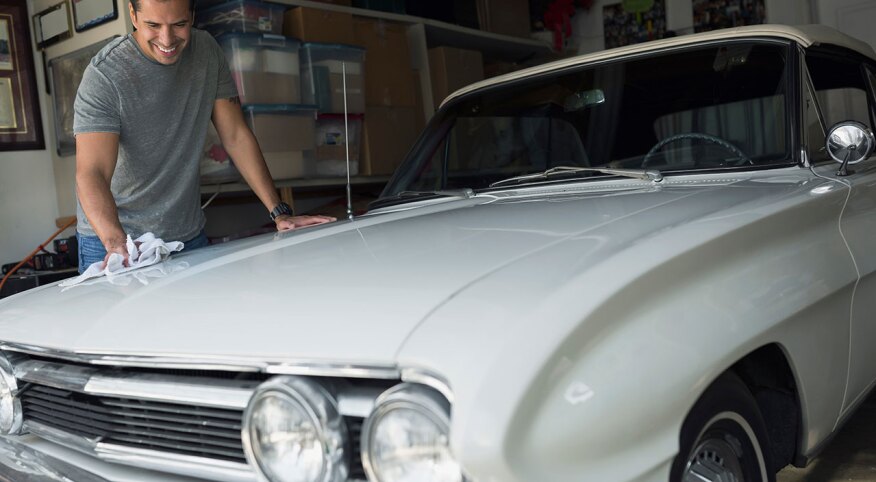Here’s the scenario: An older relative passes away, and while cleaning out their garage, you discover a car — or most of a car. When you roll it into the sun, it looks better. The leather interior is worn like an old pair of chaps, the engine bay smells slightly of gas and half-burned oil, and the thin steering wheel rim still bears your relative’s fingerprints.
You remember — or maybe you just recall from photos — a terrifying ride in a convertible when you were 8 or 9, sitting, unbelted, on a stack of shop manuals in a storage area behind the front seats.
Your family says you’re welcome to have the jalopy. But what, exactly, are you doing with it?
First of all, give up those fantasies that you’re sitting on a gold mine. Unless it’s a six- or seven-figure blue chip model (a Split Window 1963 Corvette, a Mercedes-Benz 300 SL Gullwing, an Aston Martin DB5 like James Bond’s), fully restoring an old set of wheels is generally a poor investment. If you’re going to modernize it, do it for love.
But set limits. Think about how much you want to spend to get it running, along with how much you can set aside for ongoing maintenance and insurance. Then double that number. Then light all of that money on fire.
The vehicle identification number (VIN) can help you make this determination. It can be found on a metal plate at the edge of the dashboard, and/or under the hood, or on the title. The number can be plugged into an online decoder that will tell you what the year and model are, along with information on where the car was built, what engine/transmission it had in it and what other options it included.
Rare original engines or other desirable options, like a manual transmission or a special color or trim package, can raise a car’s value significantly. A vehicle with an engine and transmission that matches the chassis with which it was built can also up the value.
Since nostalgia for one’s youth is the heart of automotive affection, details such as color can make a difference in a vehicle’s worth. Drab ‘70s yellows, greens and oranges, like the hues on your childhood appliances, or wild ‘80s decals and pinstripe packages, like on your OP shirts, raise a car’s profile. Even ‘90s teal has appeal.
The Hagerty’s Valuation Tool is an incredible resource. It includes detailed pricing for 40,000 highly prized cars, trucks, vans and motorcycles from the postwar era to the present. It supplies estimated values based on four condition levels, so it can help you ascertain what your vehicle is worth as it sits, as well as what it would be worth if you brought it up a level or two.
“A car must have good bones if you’re considering investing money in it,” says Tom Cotter, star of the YouTube show Barn Find Hunter. He recommends checking the condition of the subframe, the body panels — especially the floor and rockers, and under the doors — for rust. “It’s difficult and expensive to build bad bones back into good bones.”
If, after all of this, you decide to forgo your familial connection and sell, there are options. Craigslist and Facebook Marketplace are free, but you sometimes get what you pay for in terms of the client pool. Lots of tire kickers and hagglers and people looking to acquire cars cheaply and flip them elsewhere. Auctions from eBay Motors are a middle ground, with some decent values and some sharks. Classifieds from Hemming’s and ClassicCars and auctions from Hemming’s and BringATrailer will yield the most knowledgeable buyers, willing to pay a premium for something worthwhile.
And whether you’re fixing or selling, remember that you don’t have to update the vehicle to showroom standards. “Not every car needs to be restored. Like older people, sometimes age is beauty,” Cotter says.
In fact, not restoring the car completely may even add to its value. “The newest trend in the old-car hobby is preservation, not restoration. Polish the original paint and clean the interior. It’s only original once.”

Offset




